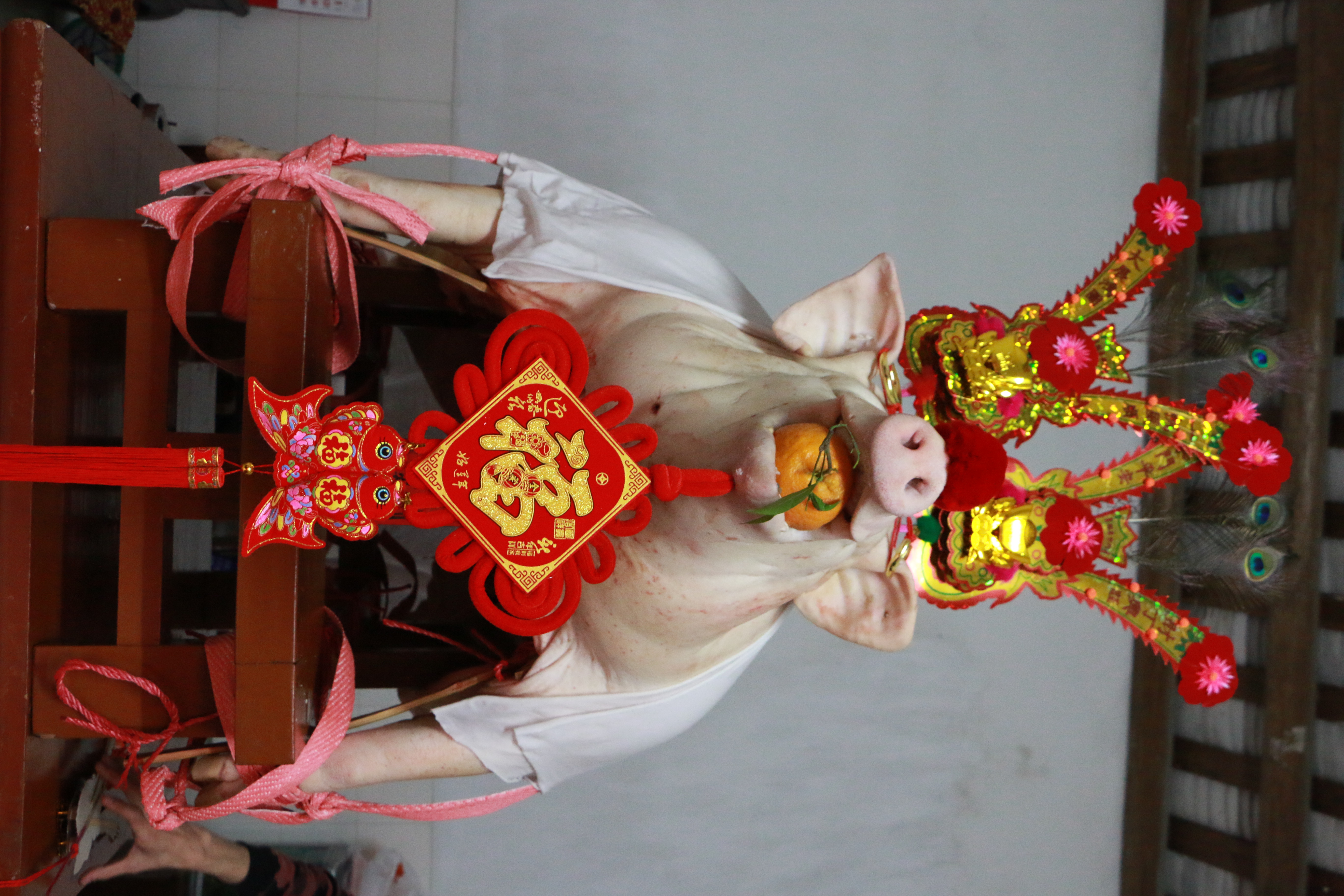
裝飾大豬
Decoratethe Pig
總述
中國歷史源遠流長,民俗活動更是精彩紛呈。中國潮汕、閩南一帶都有“賽大豬”的民俗活動,潮汕地區是“賽大豬”的起源地,以汕頭地區最為出名。“賽大豬”是一種民間慶豐年的儀式,有著五穀豐登、六畜興旺的蘊意,加之“賽大豬”的方式有著促進生産、繁榮經濟的積極意義,因此在潮汕地區的舉辦儀式十分隆重,場面壯觀,成為遠近聞名的一大盛事。
相傳汕頭市月浦社區的“賽大豬”源於明代。那時潮汕地區常常發生鼠疫,村民便把大豬作為祭品,祈求除厄運,保祐平安。值得一提的是,除了普遍意義上的祭拜祈福外,“月浦賽大豬”還是當地年滿 24歲的男青年(方言稱“丁頭”)的成人禮——俗稱“出丁頭”,意味著即將出人頭地,因此具有更鮮明地域性的特色傳統文化。深入研究該民俗活動,進而明確其具有的民俗價值與文化意義,有助於傳承與發展我國的區域文化。
時代在進步,古老的民俗文化也在“與時俱進”地簡化甚至消失。特別是在2020疫情爆發以後,聚集性的民俗活動大量減少,“賽大豬”活動也沉寂了三年。這就更加凸顯出民俗攝影的重要意義——歷史記錄與文化傳承,提供寶貴的影像資料,讓後代的考究有跡可循。
本作品攝于2019年,實錄了“月浦賽大豬”的過程,從前期的供品準備到儀式的正式開場與收尾,還原當時民俗活動的現場。同時通過對當地百姓的採訪,解讀民俗活動背後的歷史含義,講好潮汕故事,弘揚中國文化。
前期供品準備
大豬是本次民俗活動的重頭戲,一般稱之為“丁頭豬”。人們通常會在一年前開始精心飼養這頭欽定的豬,並且要專人在本地飼養,要讓它吃好睡好。誰家的豬越肥美,暗示著誰家的家底財力雄厚,有著濃重的農耕文化氛圍。
每一頭丁頭豬都要精心打扮才能登場。豬屠宰完後,剃去豬毛,但留下豬背及尾巴上的毛做裝飾,然後開始給豬“化粧”,梳理整齊,染上紅色。白凈的豬身上貼著精美的紅色剪紙圖案,挂上吉祥的紅燈籠或福氣,口含大桔子或石榴,意喻大吉大利,多子多孫。最後擺放到用木頭和竹片捆綁而成的定制豬架子,加以固定。此外還有一隻精心打扮的羊披在豬背上,俗成“全副豬羊”。這一過程極大地體現了潮汕人民對未來的美好願景,傳承和弘揚了中國古老的手工藝術。
雞、鴨、鵝、魚是潮汕祭祀中必不可少的。“賽大豬”儀式中,每一樣供品都有它特定的造型。例如,雞定是要站著固定,意味著鶴立雞群,出人頭地的美好祝福,非常考究。
粿品是一種潮汕美食小吃,也是供品之一。潮汕粿品種類繁多,因不同節慶而變換。賽大豬民俗中,主要有較為常見的紅粿,以及只用於賽大豬祭拜儀式的面前粿。在做粿的流程中,人們往往分工明確:女性負責製作小而精的紅粿,男性負責做高而大的面前粿。男女分工在農耕文化中也反映了社會角色和責任的差異。
正式開場
月浦賽大豬一般分為兩場,一場在大年初七晚 7點到 12點,另一場在初八早上 4點到 7點。這是由於全鄉每年都有幾十人甚至上百位男子年滿 24歲,而擺大豬的場地有限,所以要早早分批並抽籤定位置。“丁頭”的人數也從某種程度上體現了該地區人口的出生率。據了解,“丁頭”的人數正逐年減少,與現階段社會老齡化的形式趨同。
拜老爺——“老爺”是潮汕人對神仙的稱謂,是一種神聖信仰。賽大豬敬奉的神明尊稱為“太保爺”。正月初七初八這兩天,“丁頭”及其母親都需要來行大禮,祈求平安順利,心想事成。
賽大豬——正月初七晚,做“丁頭”的家家戶戶都陸陸續續地來到太保爺宮前的大埕,將準備好的供品整齊地擺放在指定位置的八仙桌上。“賽”的內容主要有二:一是比比誰家的豬更大,二是比比誰家抬豬跑得快。這是此民俗活動最為精彩的部分。
時辰一到,組委會點響三聲炮,各戶馬上抬起自家的大豬,往自家飛奔而去,像搶東西一般地把大豬快速抬走,看誰跑得快。但跑的過程也要格外小心,不能掉東西,否則不太吉利。這個時候都可謂人聲鼎沸,場面尤為壯觀。
一頭四五百斤的大豬往往需要七八個大漢才扛得動,他們在圍觀村民的吶喊助威聲中狂奔。誰家的大豬“跑”得快,寓意著新年家庭和睦,人丁興旺。跑得快還意味著這家人身強力壯。在農業社會的歷程裏,強壯勇猛是合格男丁的標誌。
誦經文——正月初八一大早,所有的“丁頭爺”都要前來,集中盤坐在宮前接受經文的洗禮,保祐“丁頭爺”們幸福平安,萬事順意。至此,成人禮順利完成。
結語
月浦賽大豬成人禮,作為一個長達千百年的村落民俗活動,是村民們創造、共用、傳承的風俗習慣,寄託著五穀豐登、興旺發達的美好願望。它是老百姓長期生活實踐中創造和積累的文化,記載著一個歷史時期的文明腳印,是不可多得的非物質文化遺産。在時代快速發展下,很多繁瑣的傳統文化習俗正在不可逆地消失中。文化的消亡,是歷史記憶的喪失,將是人類文明的一大損失。拍攝紀錄,蒐集整理和搶救中華民族的民俗文化遺産的行動迫在眉睫。這讓我更堅定了民俗攝影的重要性。
Overview
China has a rich history and its folk activities are incredibly vibrant. One renowned folk activity in the Chaoshan area is called”Sai Da Zhu,” which serves as a coming-of-age ceremony for local young men who have reached 24 years of age. It also symbolizes good harvest and prosperity. Unlike animal races such as horse or dog racing,”Sai Da Zhu” involves comparing which household raises the largest and fattest pig. The competition aspect lies in carrying the pig and running faster with it. In ancient times, this method had a positive impact on promoting production and economic prosperity, making the ceremony held in the Chaoshan area highly significant, grand, spectacular, and widely recognized.
The”Sai Da Zhu” festival takes place in Yuepu Village, Shantou City within the Chaoshan area. Its origins can be traced back to the Ming Dynasty when plague outbreaks were common in this region. Villagers would sacrifice pigs to pray for good luck and peace. Over time, it evolved into a coming-of-age ceremony for local youth known as”Ding Tou” in dialect terms. Conducting an extensive study on this folklore activity will further elucidate its cultural significance and folklore value while aiding in preserving and developing Chinese regional culture.
With societal progress comes simplification or even disappearance of ancient folk culture; especially after the outbreak of COVID-19 pandemic in 2020, gatherings for folk activities significantly decreased resulting in cancellation of the”Sai Da Zhu” event for three consecutive years. This emphasizes further importance of folk photography - serving as historical records that contribute to cultural inheritance by providing valuable visual data for future generations’ research purposes.
This work documents the process of”Sai Da Zhu.”
These photos were taken in 2019, documenting the entire process of”Sai Da Zhu” in Yuepu Village, capturing the preparation of offerings and the opening and closing ceremonies, thus recreating the authentic atmosphere of these traditional folk activities. Additionally, by conducting interviews with local residents, we delve into the historical significance behind these customs, thereby enhancing our understanding of Chinese culture.
Preparation of offerings
The highlight of this folklore activity is the magnificent”Dingtou Pig”, which symbolizes prosperity. People start raising this special pig a year in advance, ensuring it receives proper care and attention from a dedicated caretaker. The strength of one’s pig reflects the financial resources of their family, showcasing a thriving farming culture.
The pigs are carefully dressed up before they appear on the stage, with their hair shaved off after slaughter except for the back and tail, which are left for decoration. Then, they undergo a”make-up” process of neat combing and red dyeing. The white pigs are adorned with exquisite red paper-cut patterns, auspicious red lanterns, and hold big oranges or pomegranates in their mouths to symbolize good luck and prosperity. Finally, they are fixed onto custom-made pig racks made of wood and bamboo pieces. Additionally, a sheep is carefully draped on the pig’s back, known as the”full pig and sheep”. This entire process beautifully reflects the Chaoshan people’s hopeful vision for the future while preserving China’s ancient handicraft art.
The presence of chickens, ducks, geese, and fish is essential in Chaoshan Worshiping. During the”Sai Da Zhu” ceremony, each offering has its own distinct shape. For instance, the chicken must be standing upright to symbolize standing out from the crowd and being visibly superior, which adds an element of sophistication.
Chaoshan rice cakes are also included in the offerings. There is a wide variety of Chaoshan rice cakes, which vary according to different festivals. During the process of making rice cakes, there is often a clear division of labor: women take charge of crafting delicate red rice cakes, while men are responsible for creating giant white rice cakes. This division of labor between genders also reflects distinctions in social roles and responsibilities within farming culture.
Official opening
The”Sai Da Zhu” Festival is typically divided into two events: one on the seventh day of the Lunar New Year from 7:00 a.m. to midnight, and another on the eighth day of the Lunar New Year from 4:00 to 7:00 a.m. This division is necessary due to the large number of 24-year-old men in the village each year and limited space for displaying the big pigs. The annual count of youth aged 24 also reflects the population’s birth rate in this area, which has been decreasing over time, aligning with society’s current aging trend.
Worshipping deities is an integral part of Chaoshan people’s cultural spirit. On both the seventh and eighth days of the first lunar month,”Ding Tou” and his mother dress in red attire as they perform important rituals and pray for peace and success.
On the seventh night of the first lunar month, every household neatly places the prepared offerings on the table at the designated location. The main highlights of”Sai Da Zhu” festival include comparing whose pig is larger and determining who can carry their pig faster. This thrilling aspect adds to the excitement of this cultural event.
When the time comes, the organizing committee fires three cannons, and each household immediately carry the pig and run towards their home to see who can run faster. They need to be extra careful while running and don’t drop anything. Otherwise, it means bad luck. At this time, it was full of people and the scene was particularly spectacular.
A large pig weighing four to five hundred pounds often requires seven or eight strong individuals to carry it. They ran wildly amidst the cheers of the spectators, believing that the faster they run, the more harmony and prosperity they will receive in the New Year. Throughout history, strength and bravery have been considered essential qualities for a capable individual in agricultural society.
On the eighth day of the first lunar month, early in the morning, all”Dingtou” will gather and sit cross-legged in front of the palace to receive the sacred scriptures and offer blessings for a better future.
Conclusion
The”Sai Da Zhu” Coming-of-age Ceremony, as a traditional rural activity, has endured for millennia and embodies the aspirations for bountiful harvests and prosperity. It represents the cultural heritage forged and accumulated through generations of people’s lived experiences, documenting the imprints of civilization during a specific historical era. This intangible cultural heritage is truly precious. However, with the rapid advancement of society, numerous intricate traditional customs are regrettably vanishing beyond recovery. The decline of culture signifies the erosion of historical memory and constitutes a significant setback for human civilization. The imperative to photograph, collect, organize, and preserve the folk cultural heritage of the Chinese nation has become increasingly urgent. This experience has further reinforced my conviction regarding the paramount importance of folk photography.
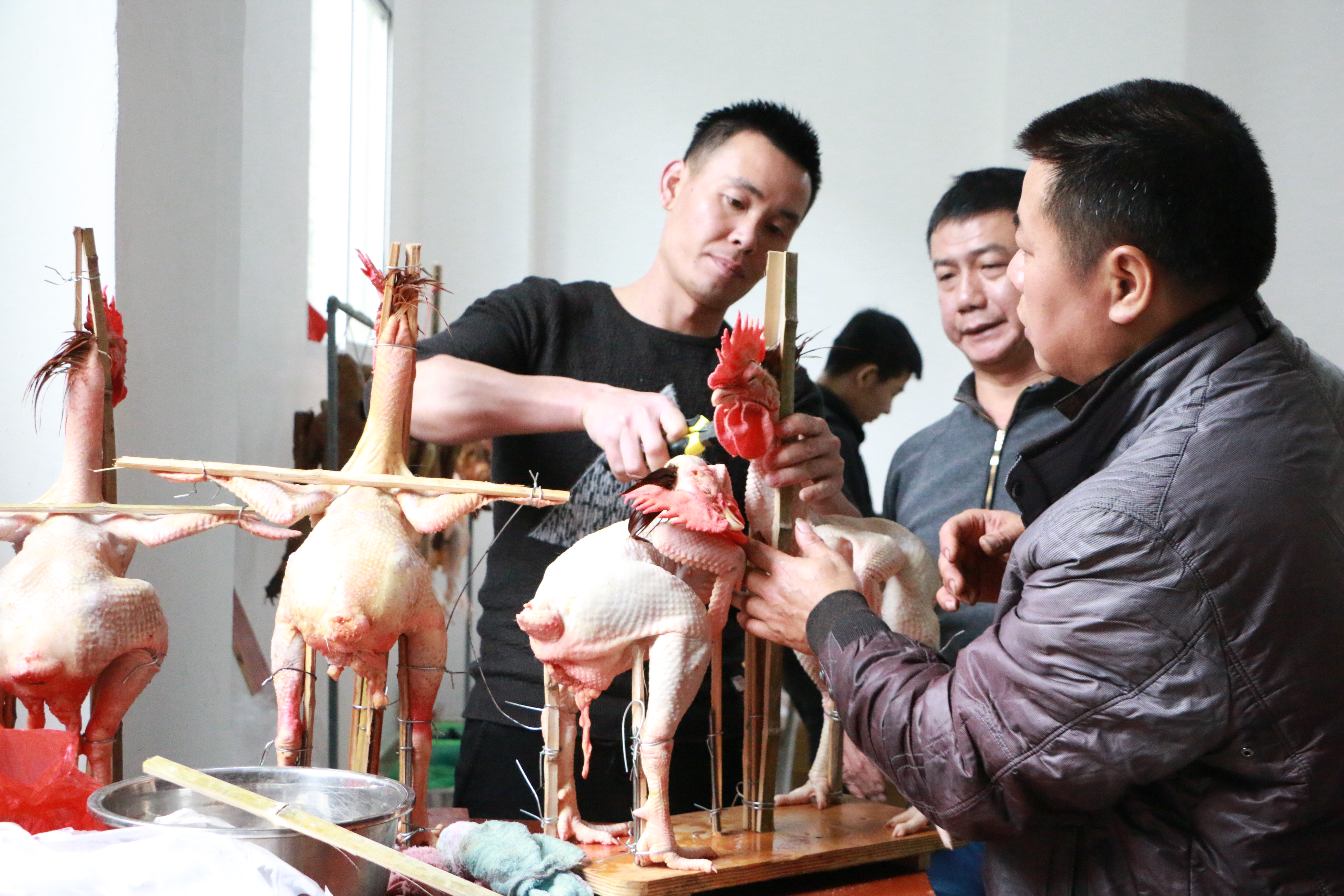
鶴立雞群
Style the chicken
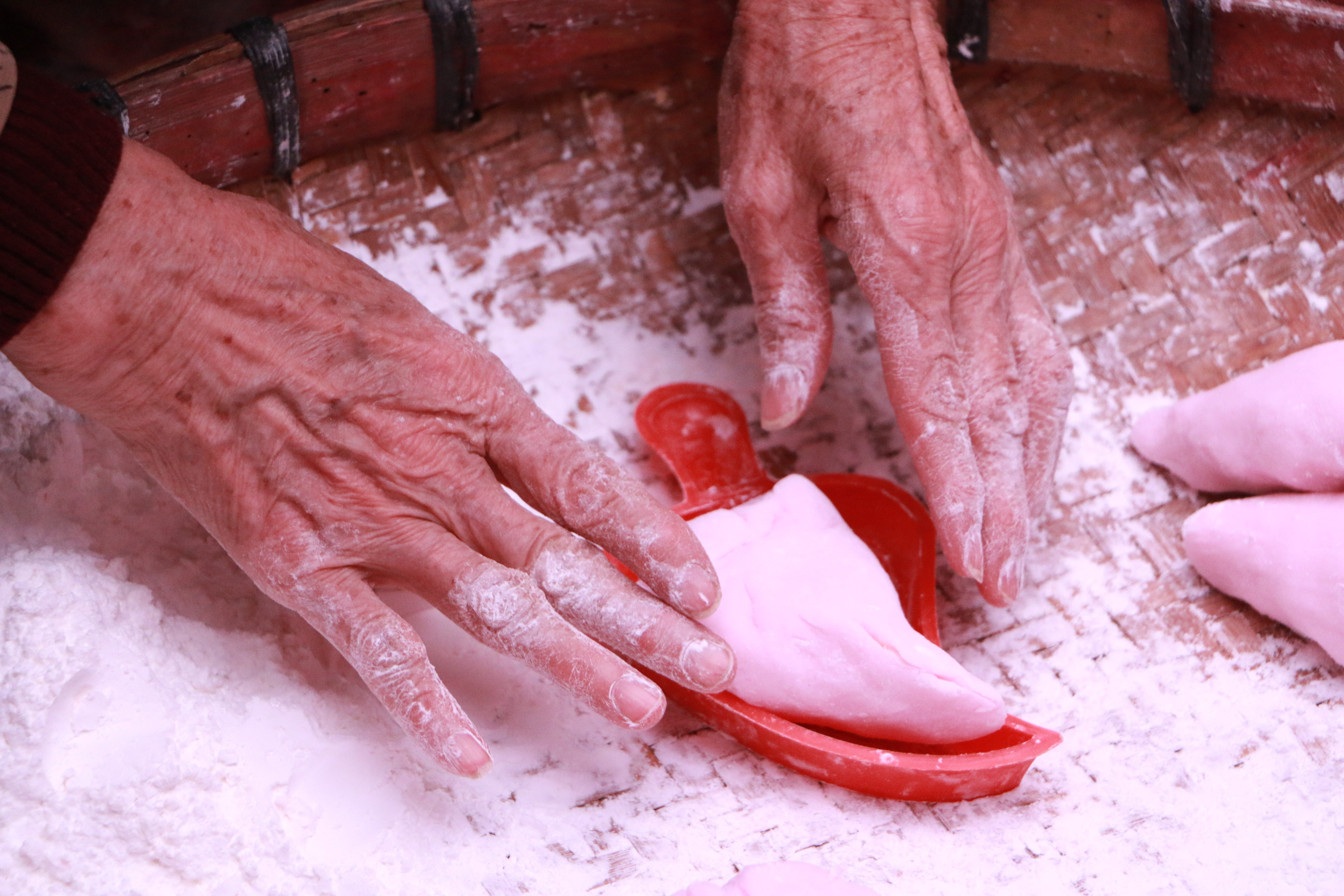
製作粿品
Make Rice Cakes
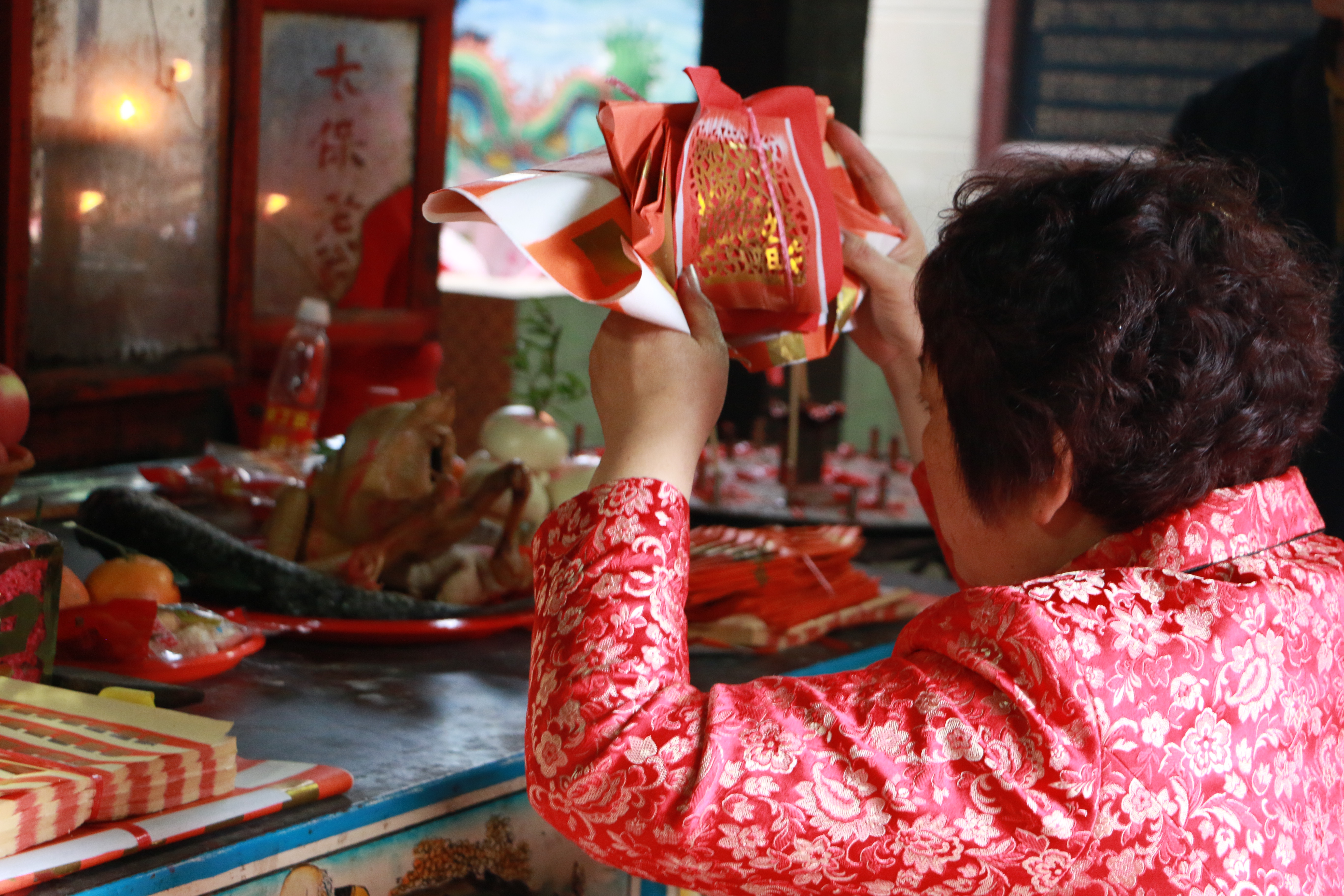
拜神
Worship
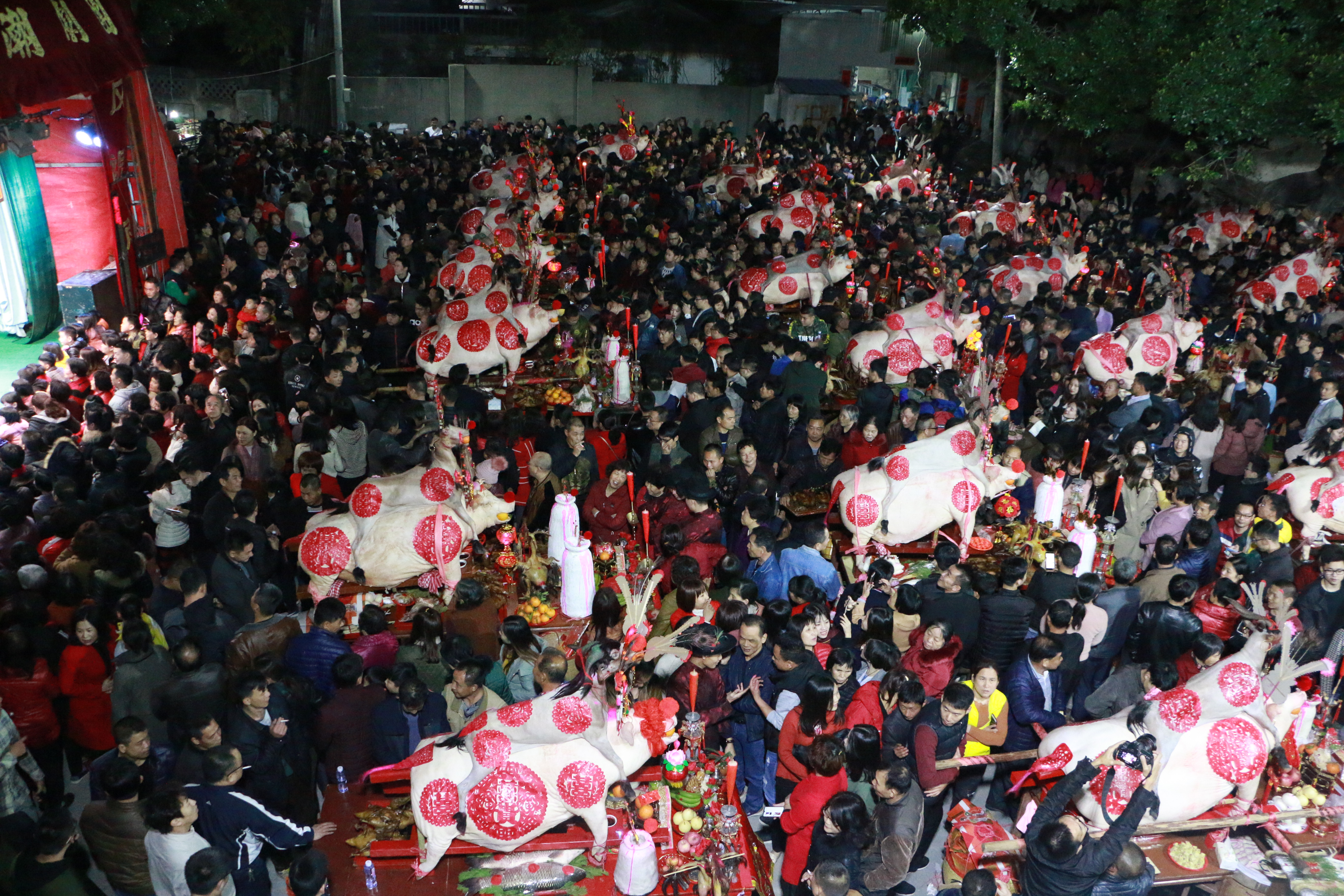
擺大豬
Display the Pig
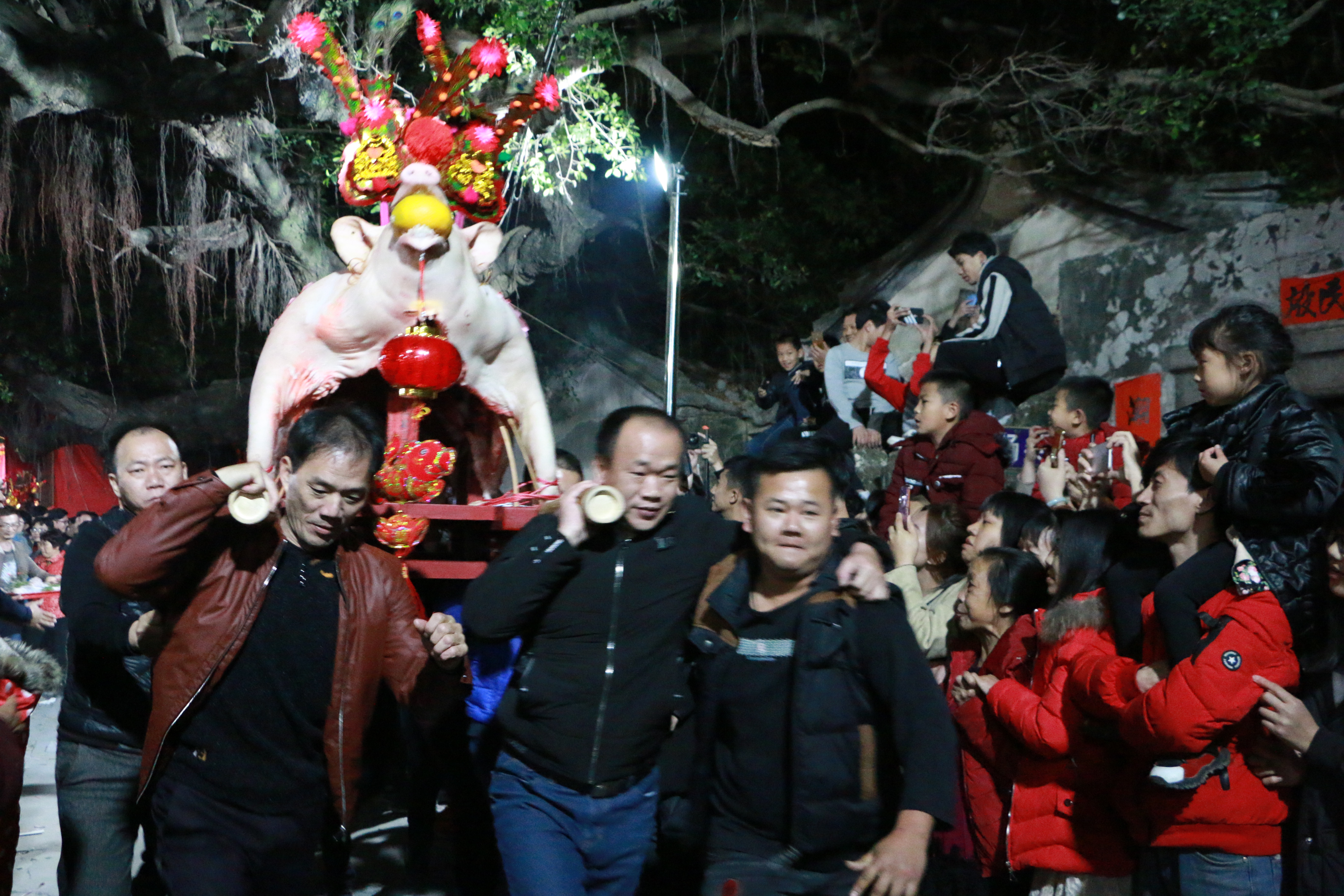
賽大豬
Sai Da Zhu
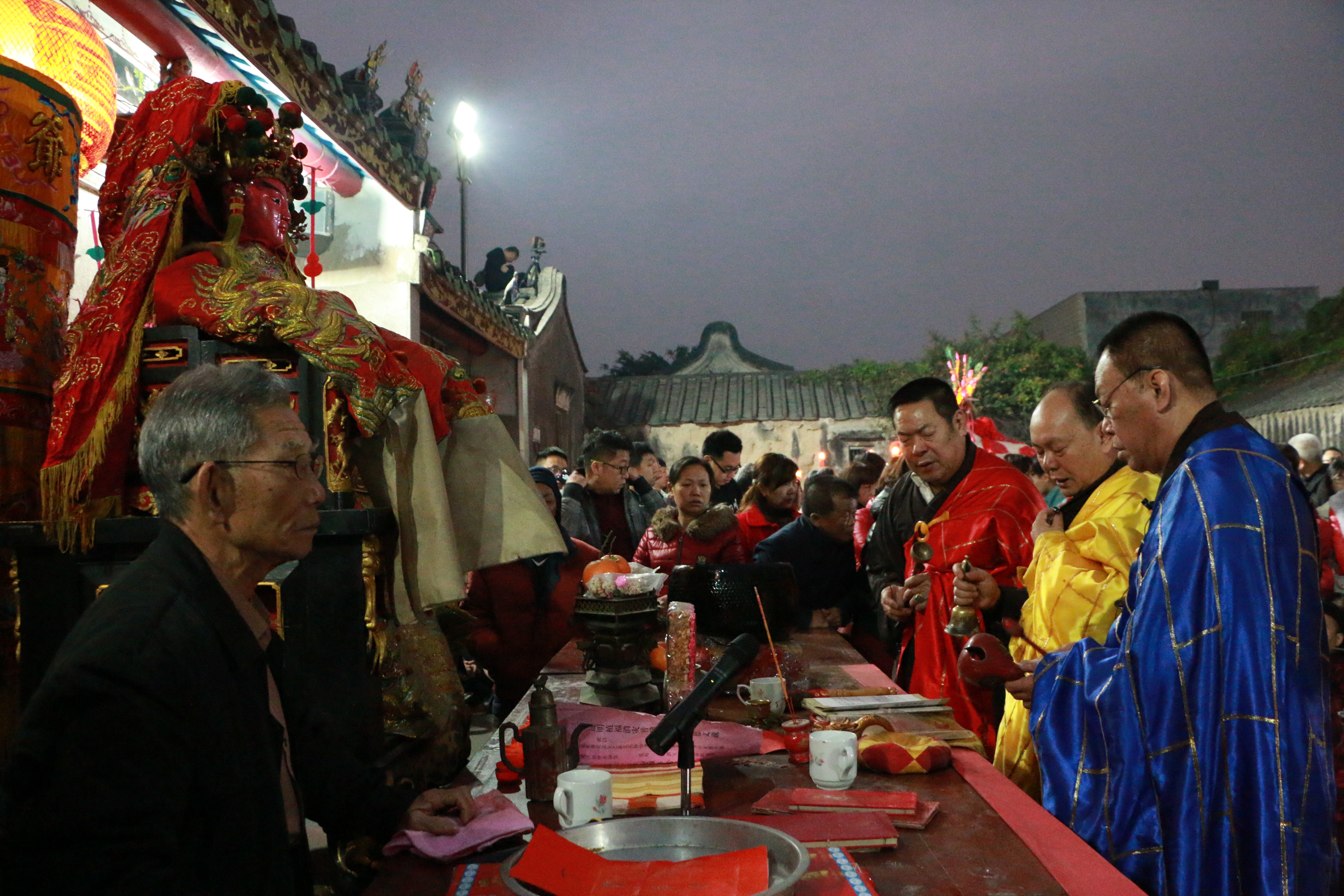
誦經
Chanting
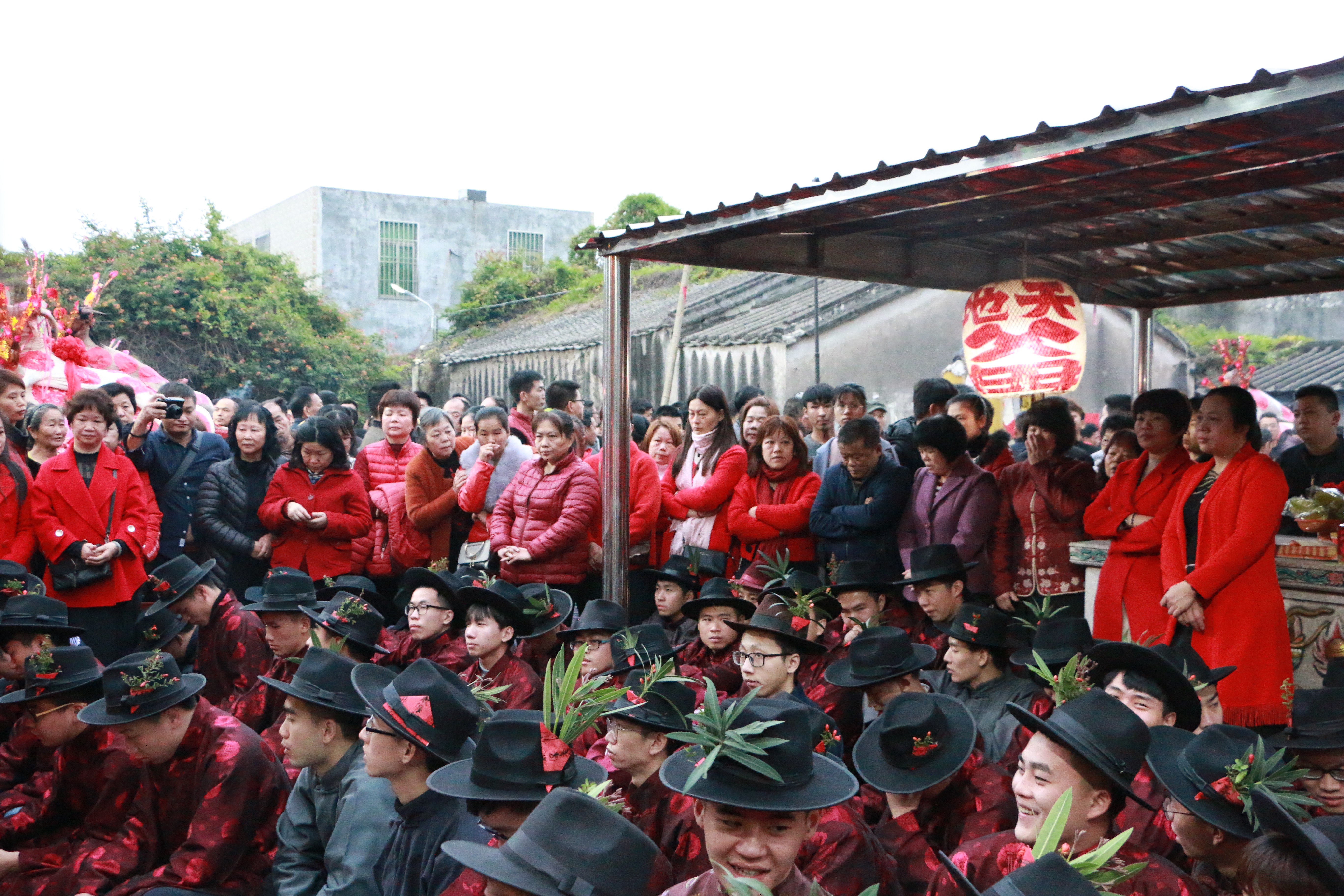
成人禮儀式
A Coming-of-Age Ceremony